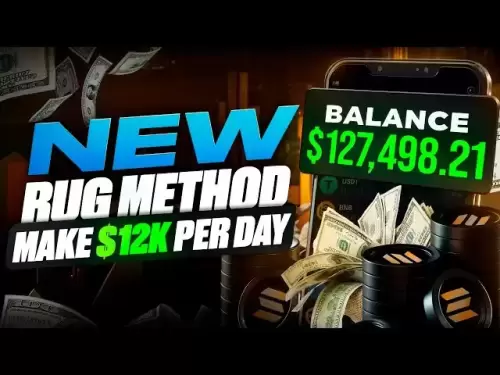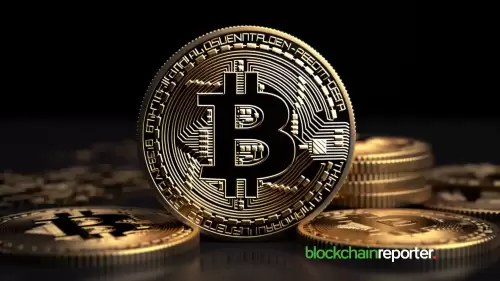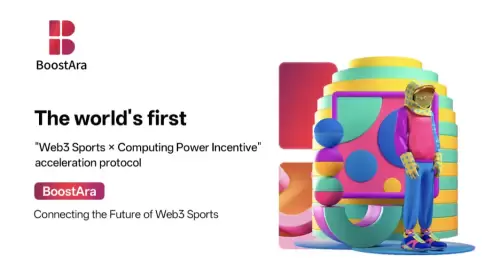 |
|
 |
|
 |
|
 |
|
 |
|
 |
|
 |
|
 |
|
 |
|
 |
|
 |
|
 |
|
 |
|
 |
|
 |
|
それは、米国の最大の銀行のいくつかが暗号通貨の世界への集団的飛躍を静かに計画していることを木曜日(5月22日)に暗示していることです。

Several of the United States' largest banks are planning to launch a jointly operated stablecoin, the Financial Times reported Thursday (May 22), citing people familiar with the matter.
米国の最大の銀行のいくつかは、共同運営のスタブコインを立ち上げることを計画しています、とFinancial Timesは木曜日(5月22日)に報告し、この問題に精通している人々を引用しています。
The report said JPMorgan Chase, Bank of America, Wells Fargo and Citigroup are exploring the possibility of creating a digital dollar that could be used for peer-to-peer payments and B2B settlements. The initiative is still in the early stages, and there is no certainty that it will proceed.
報告書によると、JPMorgan Chase、Bank of America、Wells Fargo、Citigroupは、ピアツーピアの支払いとB2B集落に使用できるデジタルドルを作成する可能性を調査しています。このイニシアチブはまだ初期段階にあり、それが進むという確実性はありません。
The banks are considering using existing rails like Early Warning Services, operator of Zelle, and The Clearing House to develop the stablecoin. They would also need to obtain approval from U.S. regulators.
銀行は、早期警告サービス、ゼルのオペレーター、クリアリングハウスなどの既存の鉄道を使用して、スタブコインを開発することを検討しています。また、米国の規制当局から承認を得る必要があります。
The timing of this venture is no coincidence. For years, stablecoins, which are digital tokens pegged to traditional currencies like the U.S. dollar, have promised to blend the best of both worlds: the efficiency of blockchain transactions and the stability of fiat currency.
このベンチャーのタイミングは偶然ではありません。何年もの間、米ドルのような従来の通貨に固定されたデジタルトークンであるStablecoinsは、ブロックチェーントランザクションの効率とFiat通貨の安定性という両方の最高の世界を融合させることを約束してきました。
They have grown rapidly, with Tether (USDT) and Circle's USD Coin (USDC) reaching hundreds of billions in circulation. Yet, their mainstream usage has remained limited due to regulatory uncertainty and a perception that they operate outside the traditional financial system.
それらは急速に成長し、テザー(USDT)とサークルのUSDコイン(USDC)が数億の流通に達しました。しかし、規制上の不確実性と、従来の金融システムの外で活動しているという認識により、彼らの主流の使用は限られたままです。
Enter the banks.
銀行に入ります。
Read More: The Payment Professional’s Guide to Stablecoins
続きを読む:Stablecoinsの支払い専門家のガイド
A Pragmatic Vision for Blockchain Integration
ブロックチェーン統合の実用的なビジョン
The proposed consortium is reportedly considering using existing rails like Early Warning Services (operator of Zelle) and The Clearing House to develop a new kind of stablecoin infrastructure — one built by regulated entities from the ground up. Their idea? To issue a token that could eventually be used for everything from peer-to-peer payments to B2B settlements, all potentially under the watchful eye of federal regulators.
提案されたコンソーシアムは、早期警告サービス(Zelleのオペレーター)やクリアリングハウスなどの既存の鉄道を使用して、規制されたエンティティによってゼロから構築された新しい種類のStablecoinインフラストラクチャを開発することを検討していると伝えられています。彼らのアイデア?ピアツーピアの支払いからB2B集落まで、すべてが連邦規制当局の注意深い目の下にあるすべてのものに使用できるトークンを発行するため。
Because the U.S. stablecoin landscape has not yet found shelter under a clear regulatory framework, the banks are still in the exploratory phase, with a shared commitment to finding a model that’s compliant, scalable and secure. Their proposed stablecoin would be fully backed by fiat held at the banks and function similarly to other stablecoins, but with a key differentiator: trust in institutional governance.
米国のスタブコインの風景は、明確な規制の枠組みの下でまだ避難所を見つけていないため、銀行はまだ探索段階にあり、準拠、スケーラブル、安全なモデルを見つけるという共通のコミットメントがあります。彼らの提案されたスタブコインは、銀行で開催されたフィアットによって完全に支援され、他のスタブコインと同様に機能しますが、重要な差別化要因:制度的ガバナンスへの信頼。
This vision is a clear departure from the early crypto ethos of disrupting incumbents. Instead, it’s a bet that those same incumbents are best positioned to bring digital dollars into the mainstream.
このビジョンは、既存の人を混乱させる初期の暗号の精神からの明確な逸脱です。代わりに、同じ現職者がデジタルドルを主流に持ち込むのに最適な位置にあるのは賭けです。
"When you think about the needs of every FinTech or payments company, or a bank that wants to enter the [stablecoin] space, they need secure infrastructure, from the creation of assets, such as tokenizing them, to holding them, and of course moving them," Utila Co-Founder and CEO Bentzi Rabi told PYMNTS last month.
「すべてのフィンテックまたは支払い会社のニーズ、または[Stablecoin]スペースに入りたい銀行のニーズについて考えると、彼らはそれらを保持するなどの資産の作成から、そしてもちろんそれらを動かすまで、安全なインフラストラクチャが必要です」
"Everyone will enter the stablecoin era in the end," Rabi added.
「最終的に誰もがスタブコイン時代に入るだろう」とラビは付け加えた。
See also: Why Stablecoins Are Stuck at the Acceptance Hurdle
参照:なぜスタブレコインが受け入れのハードルで立ち往生しているのか
The Battle for the Digital Dollar
デジタルドルのための戦い
Still, despite their promise, the majority of stablecoins are used for just one purpose: facilitating trading on crypto exchanges. They are a key foundational element of crypto markets, but not yet for payments and commerce.
それでも、彼らの約束にもかかわらず、スタブコインの大部分は、暗号交換での取引を促進するという1つの目的にのみ使用されます。彼らは暗号市場の重要な基礎的要素ですが、まだ支払いや商業ではありません。
The involvement of major banks could change that.
主要な銀行の関与はそれを変える可能性があります。
At the same time, creating a stablecoin is one thing. Coordinating among multiple banks — each with its own technology stack, risk appetite and strategic priorities — is another. This kind of collaboration will require a shared governance model, common technical standards and airtight security protocols.
同時に、Stablecoinを作成することは一つのことです。それぞれが独自のテクノロジースタック、リスク選好、戦略的優先事項を備えた複数の銀行間で調整することは別のものです。この種のコラボレーションには、共有ガバナンスモデル、一般的な技術標準、および気密セキュリティプロトコルが必要です。
That’s why, for banks, the legislative momentum in the U.S. is a prerequisite. Institutions like JPMorgan and BofA are unlikely to risk their core operations on loosely regulated ventures. Instead, they see regulation as a moat, a way to differentiate themselves from crypto-native competitors and legitimize the space.
それが、銀行にとって、米国の立法勢いが前提条件である理由です。 JPMorganやBofaなどの機関は、緩やかに規制されたベンチャーでのコア運用をリスクリスクする可能性は低いです。代わりに、彼らは規制を堀と見なし、暗号出身の競争相手と自分自身を区別し、空間を正当化する方法です。
In February, Bank of America CEO Brian Moynihan said in an interview that the bank would "go into" stablecoins if regulation were passed in the U.S., and regulatory compliance remains a key concern for financial stakeholders.
2月、バンクオブアメリカのブライアンモイニハンは、インタビューで、米国で規制が可決された場合、銀行は「stablecoins」に「入る」と述べ、規制の遵守は依然として金融利害関係者にとって重要な懸念事項です。
But the banks' entry into the stablecoin market will not go uncontested. FinTechs like Circle and Paxos have spent years developing robust infrastructures and building partnerships with payment processors, exchanges and merchants. On Wednesday (May 21), it was announced that the Circle Payments Network (CPN) is now live, enabling stablecoin-powered cross-border payments.
しかし、銀行のStablecoin市場への参入は争われません。 CircleやPaxosのようなフィンテックは、堅牢なインフラストラクチャを開発し、支払いプロセッサ、取引所、商人とのパートナーシップを構築してきました。水曜日(5月21日)に、Circle Payments Network(CPN)が現在公開されていることが発表され、Stablecoin駆動の国境を越えた支払いが可能になりました。
To succeed, the banks will need to articulate a clear value proposition — what does their stablecoin offer that existing ones don’t? One answer could lie in the integration with existing banking services. Imagine a Zelle payment settled instantly in a stablecoin, or a corporate treasury using tokenized dollars for real-time reconciliation. These are tangible use cases that banks are uniquely positioned to serve.
成功するために、銀行は明確な価値提案を明確にする必要があります。 1つの答えは、既存の銀行サービスとの統合にある可能性があります。リアルタイムの調整のためにトークン化ドルを使用して、ゼルの支払いが即座に解決されるか、トークン化ドルを使用して企業財務省を即座に解決することを想像してください。これらは、銀行がサービスを提供するために独自の位置にある具体的なユースケースです。
An interesting take on the news comes from a recent blog post by banking trade publication The American Banker. In the post, the publication noted that the banks' involvement in the stablecoin space is a natural progression of their existing efforts in the digital asset domain.
このニュースの興味深い見解は、銀行業界の出版物The American Bankerによる最近のブログ投稿から来ています。投稿では、出版物は、Stablecoinスペースへの銀行の関与は、デジタル資産ドメインにおける既存の取り組みの自然な進歩であると指摘しました。
For example, JPMorgan has already launched its own
たとえば、JPMorganはすでに独自の発売を行っています
免責事項:info@kdj.com
提供される情報は取引に関するアドバイスではありません。 kdj.com は、この記事で提供される情報に基づいて行われた投資に対して一切の責任を負いません。暗号通貨は変動性が高いため、十分な調査を行った上で慎重に投資することを強くお勧めします。
このウェブサイトで使用されているコンテンツが著作権を侵害していると思われる場合は、直ちに当社 (info@kdj.com) までご連絡ください。速やかに削除させていただきます。






























































